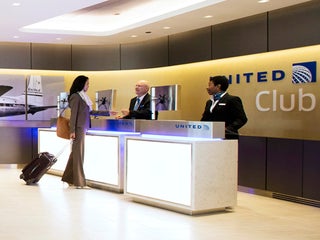Summary
Chase is launching a new product that takes the best from the Freedom card and makes it better. Additionally, Chase Freedom Unlimited is getting new cash back categories.
The content on this page is accurate as of the posting date; however, some of our partner offers may have expired. Please review our list of best credit cards, or use our CardMatch™ tool to find cards matched to your needs.
Chase issues some of the most popular cash back credit cards on the market, many of which offer great value and excellent benefits to cardholders.
On Aug. 31, the issuer announced an exciting new addition to its Freedom line-up – the Chase Freedom Flex℠, which will replace the classic Chase Freedom®*.
On top of that, Chase is adding valuable new cash back categories to the Chase Freedom Unlimited®. Cardholders will now earn rewards on travel purchased through Chase Ultimate Rewards, as well as on dining and drugstore purchases.
“Flex and Unlimited are the next evolution of the Chase Freedom credit card suite and challenge the status quo for what consumers expect from a no fee, cash back card,” said B.J. Mahoney, general manager of Chase Freedom, in a statement. “Earning cash back on dining, including takeout and delivery, drugstores and travel through Chase Ultimate Rewards provides immense value for customers in both the immediate and long term.”
What does the new Chase Freedom Flex offer?
Freedom Flex, available for sign-ups starting Sept. 14, comes with the same introductory bonus previously offered with the Freedom: $200 cash back after you spend $500 in the first three months.
As far as ongoing cash back rewards go, cardholders will earn:
- 5% back in quarterly bonus categories: Cardmembers can activate each quarter to receive 5% cash back on up to $1,500 in combined purchases (then 1%) on bonus categories such as grocery stores, select streaming services and many others.
- 5% back on travel purchased through Chase Ultimate Rewards, including vacation and car rentals.
- 3% back on dining purchases, including take out or eligible delivery services.
- 3% back on drugstore purchases, including daily essentials like medicine, toiletries, diapers and more.
- 1% unlimited cash back on all other purchases.
With the new card, Chase is also shifting from Visa to Mastercard. It’s a notable change, as Freedom Flex cardholders will get access to World Elite benefits, including:
- Cell phone insurance: Up to $800 per claim and $1,000 per year in cell phone protection against theft or damage for phones listed on cardmembers’ monthly bill.
- Lyft: $10 in credit for every five rides taken in a calendar month, automatically applied to the next ride and capped at once per month.
- 5% cash rewards on Boxed purchases for use on future purchases.
- Free ShopRunner membership, which offers two-day shipping and free return shipping at over 100 online retailers.
- Fandango: Double VIP+ points for movie tickets purchased via the Fandango app or Fandango.com, which can be used toward purchasing tickets on Fandango or toward streaming movies and TV shows on FandangoNOW.
- Mastercard Priceless Experiences, which provides access to one-of-a-kind digital and location-based activities.
“Today’s consumers are seeking accessible financial products tailored to their individual and evolving needs,” said Linda Kirkpatrick, president of U.S. Issuers at Mastercard, in a statement. “We’re thrilled to partner with Chase on Freedom Flex, which rewards cardholders for their everyday spending while also providing access to unique and relevant experiences.”
See related: Should you switch from the Chase Freedom to the Freedom Flex?
What is going to change on Freedom Unlimited?
The Freedom Unlimited has become popular due to its simple 1.5% cash back that can be used as Chase Ultimate Rewards points at 1 cent per point, making it a good card to pair with one of Chase’s Sapphire cards.
See related: Why are Chase Ultimate Rewards points so valuable?
The 1.5% cash back rate will remain, but the Freedom Unlimited will also get added bonus categories similar to those of the new Flex card.
The categories will include:
- 5% back on travel purchased through Chase Ultimate Rewards
- 3% back on dining
- 3% back on drugstore purchases
The changes are kicking in Sept. 15, with no additional steps required from cardholders.
New Unlimited cardmembers will also receive $200 cash back after spending $500 on purchases in the first three months.
Should you sign up for the new Chase Freedom Flex?
If you’ve been thinking about applying for Chase Freedom, you may find the new offer even more attractive. Freedom Flex keeps the 5% cash back in quarterly categories available on Freedom, but, true to its name, adds more flexibility in earning cash back, rewarding cardholders for travel, dining and drugstore purchases year-round.
Note that existing Freedom cardholders who have already earned that card’s sign-up bonus are eligible to earn another one with the Flex if they’re approved for the new card. Alternatively, you can consider a product change if you don’t want to carry two Freedom cards. There’s no reason not to call in and switch from the Freedom to the Flex and boost your rewards earning potential.
Overall, the launch of Freedom Flex is excellent news for rewards enthusiasts, as it takes a great product and makes it even better.
*Information about the Chase Freedom card has been collected independently by CreditCards.com. The issuer did not provide the content, nor is it responsible for its accuracy.
Editorial Disclaimer
The editorial content on this page is based solely on the objective assessment of our writers and is not driven by advertising dollars. It has not been provided or commissioned by the credit card issuers. However, we may receive compensation when you click on links to products from our partners.



